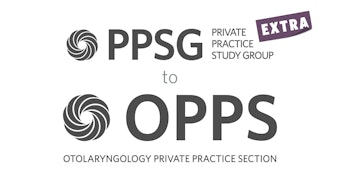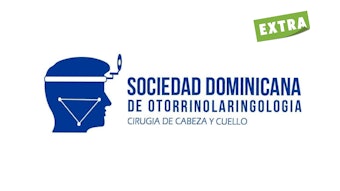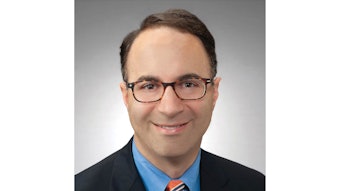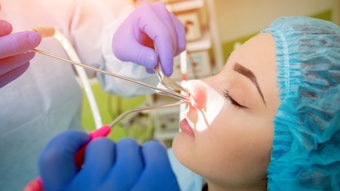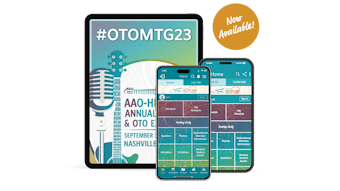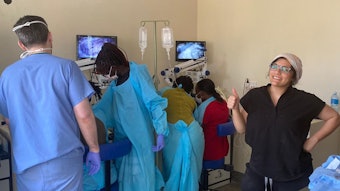Pearls from Your Peers: Depressor Anguli Oris Myectomy
Explore recommendations for DAO myectomy.
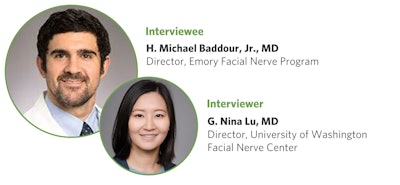
After facial nerve injury, co-contraction of the depressor anguli oris (DAO) muscle with the zygomatic muscles during smile can limit oral commissure excursion in patients with nonflaccid facial palsy (NFFP). This can lead to a "frozen" smile or downturn of the oral commissure during smile due to hyperactivity of the DAO in addition to other lip depressing muscles. DAO myectomy is a procedure that can improve smile symmetry and maxillary dental show by excising a portion of the DAO and buccinator muscles. I am here with Dr. Baddour, director of Emory's Facial Nerve Program, to discuss DAO myectomy.
Which patients may benefit from DAO myectomy?
Dr. Baddour: I offer the procedure to all NFFP patients with a sigmoid smile deformity and poor upper dental show. I typically give them a trial of botulinum toxin to the affected DAO, and if they are pleased with the results, offer them myectomy. I counsel them that they will gain 1.5 to two more teeth in terms of upper dental show.
Dr Lu: I agree with Dr. Baddour, and I will often demonstrate the expected improvement to patients with a lidocaine test in the clinic. I inject the DAO as well as the distal buccinator muscle with 1% lidocaine with 1:100,000 epi and take pictures before and after to review with the patient. I find that the immediate effect is helpful for patients in decision making. There is a helpful description of this by O'Rourke and Miller. This study found that the improvement after myectomy was even greater than that predicted with lidocaine injection.1
How is it performed, and what is postop recovery?
Dr. Baddour: I perform the procedure under local anesthesia in the office through an intraoral approach with a 1.5 cm incision along the anterior buccal mucosa over the modiolus area. I then remove a section of buccinator muscle that gives me access to the DAO. The DAO is isolated and a central portion resected until subcutaneous tissue is seen. The mucosa is closed with 4-0 Chromic and usually an immediate improvement in smile is noted. I tell the patient they will have firm scar tissue present in the cheek for at least four-to-six weeks following the procedure and light massage is encouraged starting around three weeks postop. I usually just have them do a compression dressing and ice QID for five to seven days postop.
Dr. Lu: I perform myectomies in a very similar manner. For those patients with significant buccinator synkinesis in addition to DAO, I will excise a larger window of the buccinator muscle through the same incision. Jowett, Malka, and Hadlock have a nice description of this procedure.2 There is an alternative technique to directly access the DAO muscle via a transcutaneous punch that has been described by Dey and Boahene.3
Are there any complications patients should be aware of from the procedure?
Dr. Baddour: Intraoral wound dehiscence and infection are possible complications as well as seroma formation. Temporary oral incompetence is also a possibility until edema resolves.
Dr. Lu: I agree DAO myectomy is typically a very well-tolerated procedure and complications rates are low. Patients who undergo DAO myectomy and desire further improvement in smile symmetry or experience facial discomfort related to hyperkinesis and spasms may benefit from selective neurectomy.
References
- O'Rourke SP, Miller MQ. Predicting Depressor Anguli Oris Excision Outcomes Using Local Muscle Block. Facial Plast Surg Aesthet Med. 2023 Jul-Aug;25(4):325-331. doi: 10.1089/fpsam.2022.0282. Epub 2022 Nov 15. PMID: 36378249.
- Jowett N, Malka R, Hadlock TA. Effect of Weakening of Ipsilateral Depressor Anguli Oris on Smile Symmetry in Postparalysis Facial Palsy. JAMA Facial Plast Surg. 2017 Jan 1;19(1):29-33. doi: 10.1001/jamafacial.2016.1115. PMID: 27658020.
- Dey JK, Boahene KDO. Minimal Access Percutaneous Depressor Anguli Oris Myectomy and Terminal Neurolysis for Facial Paralysis Patients with Aberrant Reinnervation Syndrome. Facial Plast Surg Aesthet Med. 2023 Jul-Aug;25(4):365-366. doi: 10.1089/fpsam.2023.0033. Epub 2023 Apr 27. PMID: 37103990.


